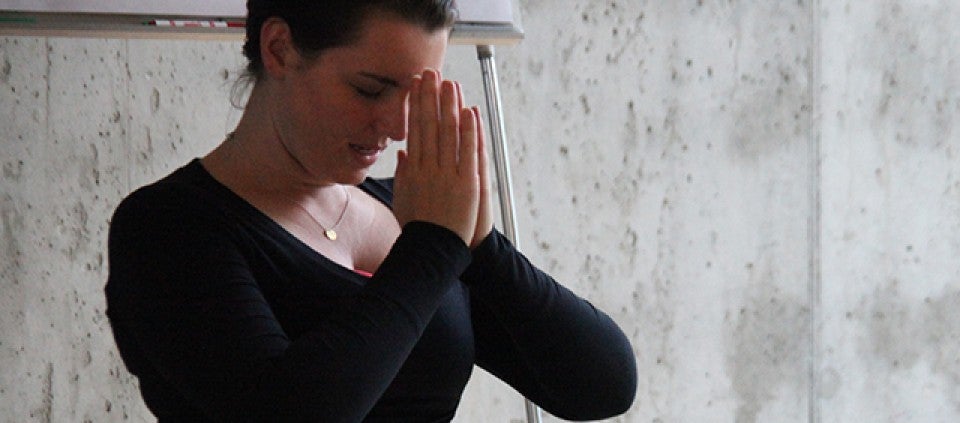Observing Weight through Witness Consciousness

Often, a client comes to me wanting to lose weight, plops down in my office, and says, “When I’m good, I eat this, and when I’m bad, I eat that.” This report reminds me to pause, breathe, and prepare to dive into paradigm shifting.
I invite the individual to consider a framework in which he or she is always “good.” I invite them to shine the light of awareness and curiosity on the ways in which their lives and personalities manifest through their relationship with food. The good/bad framing is, ultimately, a pretty passive state. A yogic framework gets you asking “I wonder what that’s about?” Then you proceed to find out through self-observation.
I recently attended a program with Yoganand Michael Carroll, Senior Faculty of the Kripalu School of Yoga. He guided us through a collection of breathing exercises, a technique that creates a muhlabhanda (root lock) of epic proportions, long fire-hydrant poses, and other high-sensation activities—and suggested that we could, like the Buddha, practice observing our demons without reacting, thereby transforming them into goddesses and yoginis.
As a long-term opponent of the “no pain, no gain” school—one whose personal and professional life mission aims to decrease suffering—I had a hard time with the idea of intentionally increasing uncomfortable physical sensations. But I came to realize that perhaps a touch of fireworks, within an otherwise moderate practice, is just what the yoga teacher ordered. Good soup needs a little spice.
Since then, I’ve been looking at how the idea of cultivating the witness—our nonjudgmental consciousness, which allow us to step back and resist the temptation to react or engage—applies to weight. How this practice plays out regarding food cravings is, for me, another piece of the puzzle in my work to help attenuate suffering for those who struggle with these issues.
I’ve observed that food cravings (particularly sugar cravings) have physiological (usually blood sugar and brain chemistry) underpinnings, but habit and psychology are also involved. Aruni Nan Futuronsky, my fellow Kripalu faculty member, tells us to try life as a collection of mindful experiments. This is a way of easing out of the habitual (get home from work and open the fridge) groove. Over time, we create a variety of alternatives, one of which will work on most days.
Yoga psychology suggests that, when we feel the craving arise, we neither push it away nor dive into it, but relax, breath, and watch it. Get curious about it. Be with it; often, it will simply float away. I have a large family that celebrates many weddings, baptisms, and gatherings, usually with cake and wine. I find that, when I return from those festivities, I often crave starchy foods for a day or two. When the craving arises, it makes me smile, and I talk to it: “I know who you are. You’re my niece’s wedding cake.”
This awareness, found within the power of pause, makes getting back to practice easier. I recognize that there’s a reason I feel the way I do, and that tends to help me make a better choice. Practice, pause, repeat. It’s all good.
© Kripalu Center for Yoga & Health. All rights reserved. To request permission to reprint, please e-mail editor@kripalu.org.
Annie B. Kay, MS, RDN, E-RYT 500, C-IAYT, is an author, nutritionist, Kripalu faculty member, and important voice in whole-foods nutrition and yoga.
Full Bio and Programs